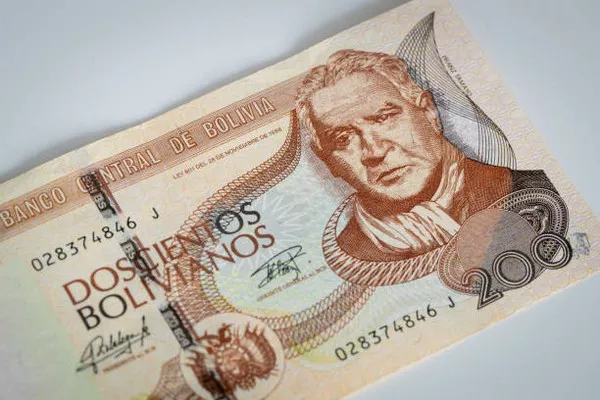In the realm of international finance, the strength of a country’s currency plays a pivotal role in determining its economic stability and global standing. Bolivia, a landlocked nation in South America, is no exception. The Bolivian currency, the Boliviano (BOB), has experienced its share of fluctuations and challenges. This article delves into the factors influencing the strength of the Bolivian currency and examines its performance in the context of global economic dynamics.
Historical Perspective
To understand the current strength of the Bolivian currency, it’s crucial to explore its historical context. Bolivia has a history of economic volatility, with periods of hyperinflation and currency devaluation. In the late 20th century, the country faced severe economic challenges, leading to a series of currency adjustments. However, in recent years, Bolivia has implemented various economic reforms to stabilize its currency and foster sustainable growth.
Macroeconomic Indicators
A key metric for assessing the strength of any currency is the country’s macroeconomic indicators. Bolivia has made significant strides in recent years, with a focus on maintaining low inflation rates and a stable fiscal policy. The government has implemented measures to control inflation, which is a critical factor in preserving the purchasing power of the Bolivian Boliviano.
The Central Bank of Bolivia plays a crucial role in managing monetary policy and intervening in the foreign exchange market when necessary. By maintaining a prudent fiscal policy, Bolivia aims to create a conducive environment for economic growth while safeguarding the stability of its currency.
Trade Balance
The trade balance is another influential factor in determining the strength of a currency. Bolivia has a diverse economy, with natural gas, minerals, and agriculture contributing significantly to its exports. The country has actively sought to diversify its export base, reducing its reliance on a single commodity.
A favorable trade balance, where exports exceed imports, contributes positively to the strength of the Bolivian currency. A robust export sector not only generates foreign exchange reserves but also enhances Bolivia’s economic resilience in the face of global economic uncertainties.
Global Economic Trends
The global economic landscape plays a crucial role in shaping the strength of currencies worldwide. External factors such as fluctuations in commodity prices, geopolitical events, and international trade agreements can impact the Bolivian economy.
For instance, Bolivia’s export of natural gas is closely tied to global energy prices. A decline in energy prices could pose challenges for the country’s balance of payments and impact the strength of the Bolivian Boliviano. Additionally, shifts in global trade dynamics or disruptions in supply chains can have ripple effects on Bolivia’s economy.
Foreign Exchange Reserves
The level of foreign exchange reserves held by a country’s central bank is a key indicator of its ability to withstand external shocks. Bolivia has actively sought to build and maintain a healthy level of foreign exchange reserves to safeguard its currency. Reserves provide a buffer against economic downturns, allowing the central bank to intervene in the foreign exchange market to stabilize the Boliviano when needed.
Socioeconomic Factors
Beyond economic indicators, socioeconomic factors also contribute to the overall strength of a currency. Social and political stability, effective governance, and the rule of law create an environment conducive to economic growth and investment.
Bolivia has made progress in these areas, with a focus on inclusive policies and poverty reduction. A stable political environment enhances investor confidence and contributes to the strength of the Bolivian currency.
Challenges and Opportunities
While Bolivia has made commendable efforts to strengthen its currency, it faces challenges that require continuous attention. One such challenge is the need for ongoing economic reforms to enhance competitiveness, improve infrastructure, and attract foreign investment. Additionally, addressing income inequality and promoting inclusive growth will be crucial in sustaining the country’s economic progress.
On the flip side, Bolivia has opportunities for further economic diversification and regional cooperation. Strengthening ties with neighboring countries and participating in regional trade agreements can open new avenues for economic growth and enhance the resilience of the Bolivian economy.
Conclusion
In conclusion, the strength of the Bolivian currency is influenced by a myriad of factors, including macroeconomic indicators, trade balances, global economic trends, foreign exchange reserves, and socioeconomic conditions. Bolivia’s commitment to prudent fiscal policies, economic diversification, and social stability has contributed to the relative strength of the Bolivian Boliviano.
As Bolivia navigates the complexities of the global economic landscape, continued efforts to address challenges and seize opportunities will be essential. By fostering a conducive environment for economic growth and maintaining a disciplined approach to monetary and fiscal policies, Bolivia can enhance the resilience and strength of its currency in the years to come.


